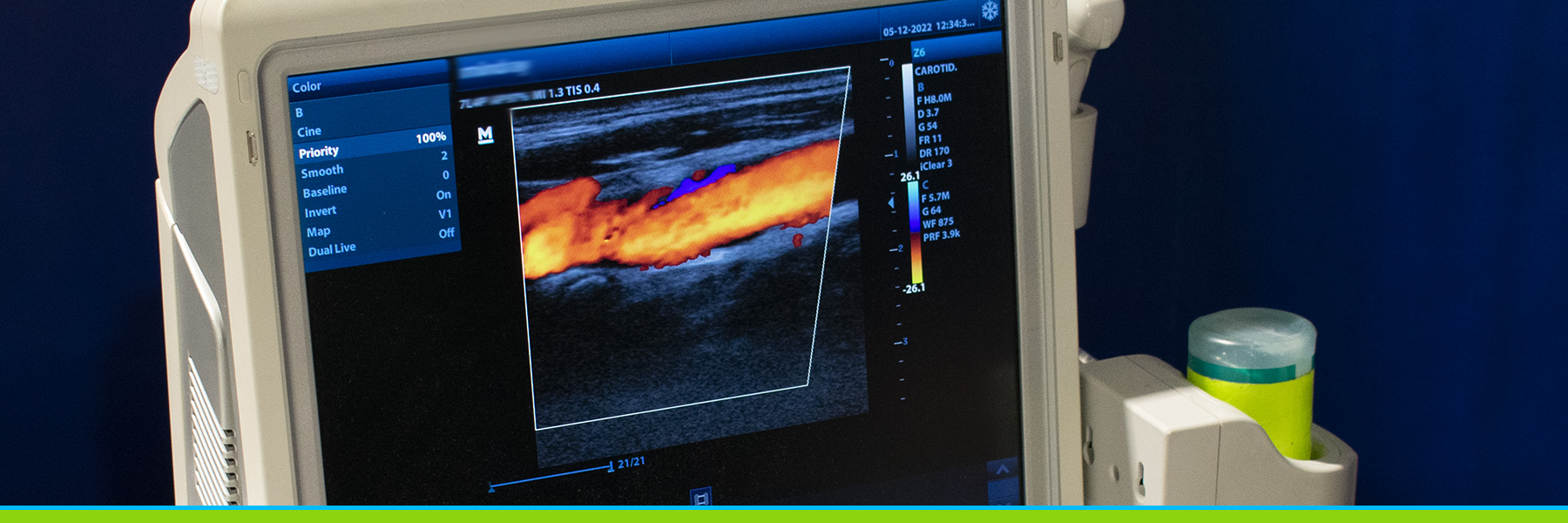
![]()
The The AAA screening is painless and non-invasive. It is conducted as the participant lays on their back while the technician uses an ultrasound to take images and measurements of your abdominal aorta. The technician will take measurements of the abdominal aorta to look for any abnormalities that might require further examination.
The abdominal aorta is the main artery that originates in the heart and is the largest blood vessel in the body. As the lining weakens from age and other risk factors, the artery wall can become thinner and expand. The most common location for an AAA is between where the aorta divides to supply blood to the kidneys and where it divides to supply blood to the pelvis and legs. Approximately two-thirds of all abdominal aortic aneurysms occur in men. An abdominal aortic aneurysm will most likely develop without causing any pain or other physical symptoms. Most AAAs are caused by plaque buildup, also known as atherosclerosis, but they can also be caused by injury or infection.
There are two ways an AAA can cause internal bleeding: in what is known as a dissection, the layers of the artery wall weaken and split, causing bleeding into the walls of the artery. The second occurrence happens when the artery wall bursts completely, which is called a rupture. Both events are emergencies and require immediate medical attention. It’s simple and painless to understand your risk by getting an AAA screening and determining a plan of action with your provider.
Many people with an abdominal aortic aneurysm do not experience symptoms; these are the most common warning signs.
An AAA screening is valuable for anyone age 50+, or age 40+ with other risk factors for cardiovascular disease.*
40+
Every 1-3 years*